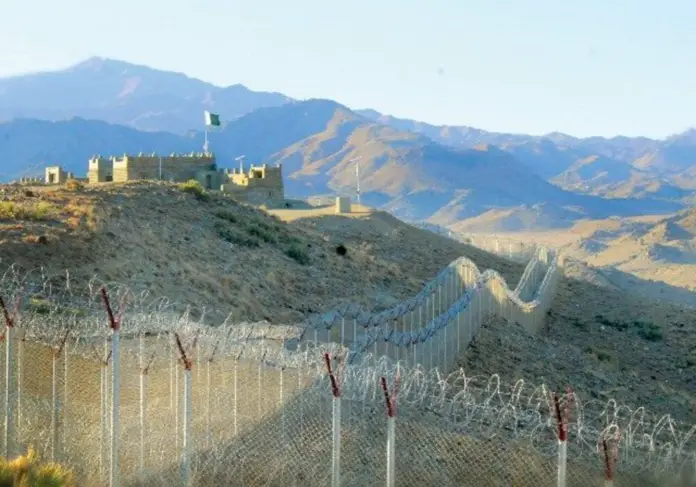National security implies a country’s capability to safeguard itself against threats emanating from enemies both within and without, traditional or non-traditional. Generally, national security dynamics range from the protection of a state’s territorial sovereignty to sanctity, citizenry to economy, and institutions to polity. Realization of national security goals demand vibrant and dynamically consistent policymaking in political, social, economic, security, foreign policy, and diplomatic arena, indispensably coupled with an efficacious and sound mechanism of implementation of the same in their truest sense.
Unfortunately, national security has remained one of the most attended about and intriguing debate of Pakistan since its very inception. The recent surge in militant and terrorist attacks and uncertainty in Afghanistan under the Taliban is nothing but the intriguing manifestation of the country’s security dynamics.
Pakistan has always been beset with grave security threats from within and without, ranging from immediate and direct threats from the belligerent eastern and western neighbours, cold war’s legacy of the scourge of terrorism, lack of development of an efficient and consistent political culture, frequent coups, economic upheavals, and foreign policy failures. All the country did in its over seven decades’ chequered history was to use survival tactics, from one challenge to another. Pakistan continued to remain a security state rather than becoming a welfare state, as envisioned by its founders. This is one of the reasons why the country couldn’t be rightly steered to the path of prosperity and advancement.
At the root of Pakistan’s security dilemma lies its geostrategic location, which is a perpetual irritant. Although the geostrategic position offers Pakistan numerous advantages that are not fully tapped, the cost of its liability continues to outweigh the good. Despite being at the heart of superpowers, South and Central Asia, the same couldn’t be exploited for its benefit. The liabilities wired in Pakistan’s location have worked to their fullest in creating destabilization and dire security challenges to the country.
Afghanistan, one of Pakistan’s neighbours, continues to remain a source of cross-border extremism and terrorism. Most of the terrorist activities Pakistan faced for one and a half decade emerged directly or otherwise from the remnants of the cold war orchestrated Afghan jihad, in the form of TTP and other militant splinter groups. The UN latest report on TTP’s reorganizing activities and the subsequent security challenges it emanates for Pakistan is of serious concern, both for country’s political and military leadership.
Pakistan’s policymakers, who entangled its fate with the two rivals, the USA and the erstwhile USSR, to prolong their reign in Afghanistan, cannot be completely absolved of the blame for worsening the situation.
A belligerent India, particularly under the current leadership, has posed the worst of the security threats Pakistan has ever faced. Be it India’s forceful occupation of the valley of Kashmir to undo its semi-autonomous status, three wars, perpetual wrangling on Siachen, water terrorism, and sponsoring insurgency in Balochistan, a huge part of Pakistan resources remained directed in neutralizing, if not undoing, the threats emanating from its eastern border.
Moreover, the international security landscape and dynamics posed threats of various nature and severity. With the cold war legacy of extremism and insurgency; an unprecedented ideological contest, both within and without; the menace of drug and human trafficking; and the mass influx of Afghan refugees, Pakistan has rarely had an easy time in any part of its history. Pakistan’s rethinking and redirecting its erstwhile fragile foreign policy, from west-centric to the eastern one, isn’t free from foreign policy and security irritants though.
The ongoing Sino-US cold war puts Pakistan in an uneasy choice between its cold war ally and its all-weather friend. The worsening of the Kashmir issue after India’s abrogation of its semi-autonomous status, the ongoing FATF challenge, and the Afghan imbroglio further limit Pakistan’s foreign policy choices, as it needs US support for Kashmir and FATF. Moreover, the unholy Indo-US nexus, as a tool of containment strategy against the resurging China, offers numerous constraints to not only CPEC, but also acts as an incentive for India to carry nefarious insurgency activities and fuel proxy pursuits inside Pakistan.
Apart from external challenges, the internal security threats facing the country are eating on its very fabric and health. Political instability and a lack of sound and coherent political culture are as big a threat as the traditional security issues. Even after seven and a half decades of its inception, democracy couldn’t take root as a vibrant political system. Frequent military coups left an indelible black mark on the democratic process and culture.
A fragile economy poses another non-traditional security challenge with lethal repercussions on the decision making and foreign policy choices of Pakistan. Lacking self-sufficiency in the economy dictated foreign policy choices at the cost of national interests. A realist and independent foreign policy, serving exclusively Pakistan’s national interest at its best, couldn’t find space, thanks to its reliance on foreign aid.
Extremism, terrorism, and sectarianism are other security issues facing Pakistan. Though these threats have been nabbed to a large extent due to various counterterrorism strategies and operations, these scourges seem far from being rooted out or eliminated altogether. The latest terrorist attacks are a dreadful reminder of that.
Water insecurity is another threat. According to a latest report, the per capita water availability in Pakistan is around 800 cubic meters, making it a water stressed country.
Additional security challenges the country is beset with include the industrial downfall and the energy crisis. Rampant corruption, frequent clashes among state institutions, growing wedges in national integration, skyrocketing inflation, rising unemployment, abject poverty, growing intolerance, ever-bourgeoning population, mass illiteracy, and growing violence against children are also huge threats to the stability of Pakistan.
Though these threats to the national security may not result in its collapse – thanks to the exceptional resiliency the country witnessed in the face of monstrous and mounting challenges – they could halt Pakistan’s journey to prosperity and the dream of a welfare state.
What is immediately required for the realization of the long-cherished dream of prosperity and a welfare state is the formation of a strategy of all-encompassing efforts, taking along all stakeholders. An agenda of political, institutional, economic, social, and foreign policy reforms will serve the purpose of putting Pakistan on the position and status it deserves, both within and without.







